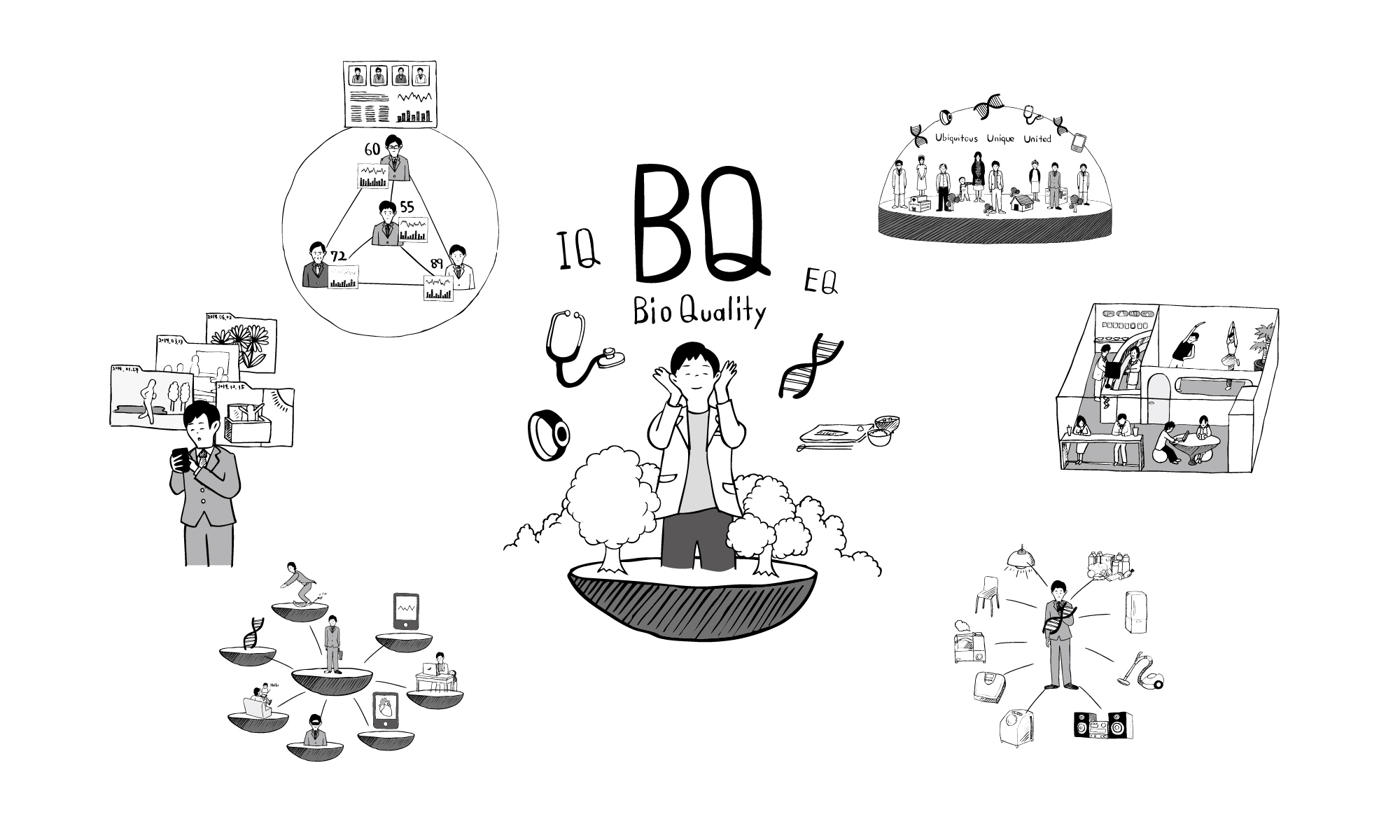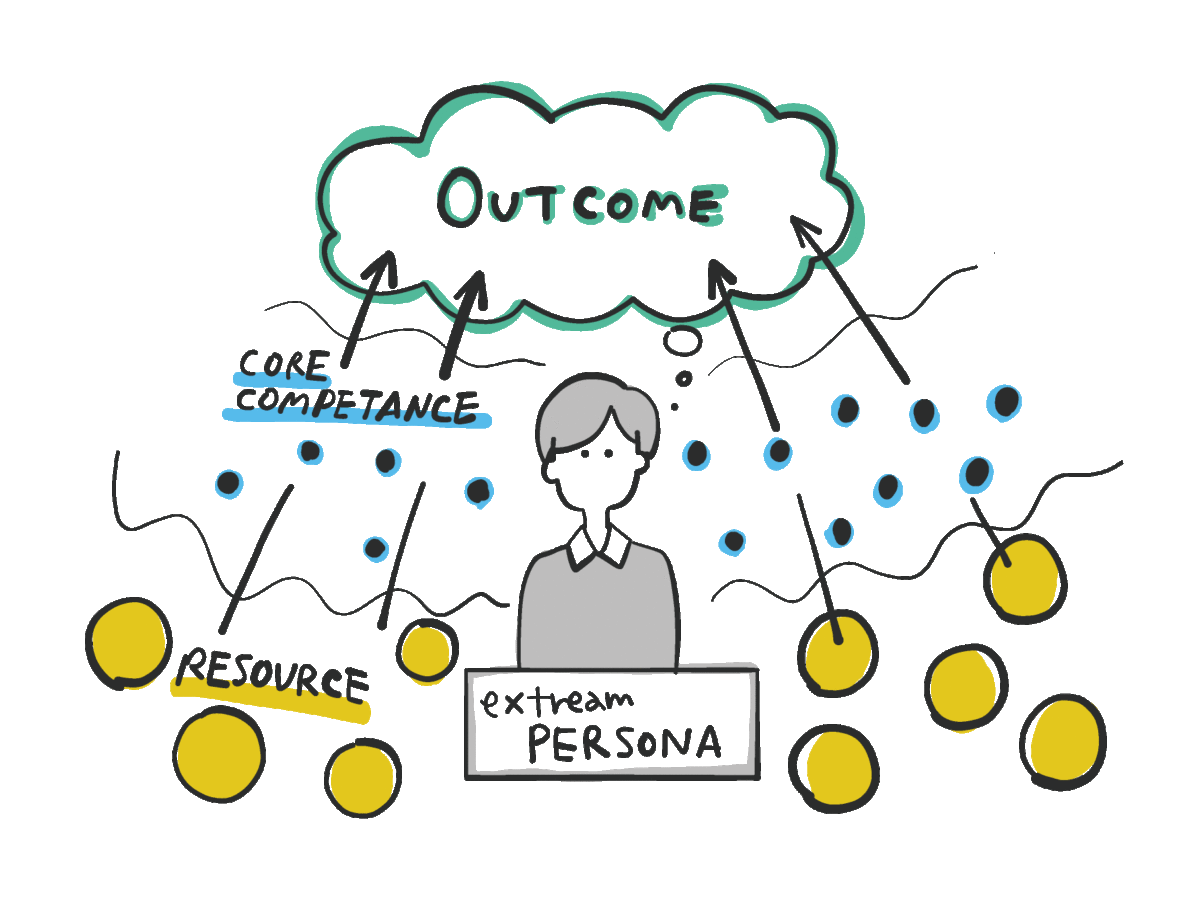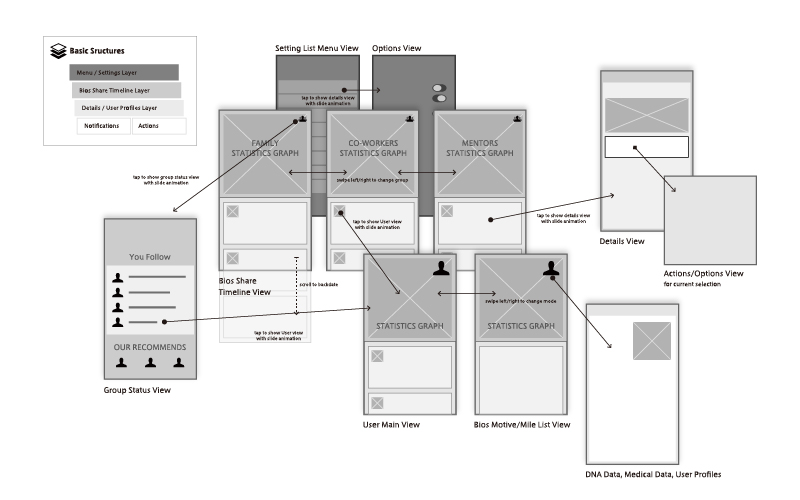Creating a vision that connects healthcare and working styles
Designing a service for workers utilizing genomic technology
These days, with advances in various physical data analysis technologies such as genomic technology, PHRs (personal health records), and big data of daily activities, it is possible to understand the status of our health in real-time with a wearable device. To support people’s health in a way that is more linked to the quality of life, our client company was looking for a new healthcare service utilizing genomic data.
In this project, we focused on a “future working style” that has a great impact on the quality of life, explored the possibility of services that go beyond the purpose of maintaining health, and worked on the formation of service concepts and prototyping. ACTANT designed the design process and provided consistent support from a variety of research to co-creation workshops and prototype design.
- Category
- LifestyleWorkstyle
- Site/Year
- 2014
- Services
- Resource map / Foresight / Interview research / Business model design / Application Design / Co-creation

Approach
Interpreting the signs of the future and user behavior through dialogue
Through interviews with young researchers in various fields such as human interface, wearable media, and medical sociology, we formed a vision that served as a framework for services. After that, we spoke with both extreme users who have already incorporated health data into their lives and target users, and extracted insights using resource maps. Based on this, we held participatory design workshops with related stakeholders and users, and created more effective and sustainable healthcare services for workers.


Result
Efficient evaluation and improvement using mockups
Using a smartphone app as a touch point to realize the service concept, we proceeded with prototyping while incorporating the service into a touchable experience by using paper prototyping and mockups on the actual machine. In addition, we created a service experience scenario along with the app interface and conducted a user survey again. By making it a co-creation workshop in which users themselves participated in idea development on an equal footing rather than a one-sided interview format, we were able to obtain feedback closer to the realization phase more quickly.
Point
- Resource map research to understand user resources
- Service design that utilizes data not only to “know” but also to “create” a healthy lifestyle
- Create a mechanism that makes you want to continue using it through co-creation with users